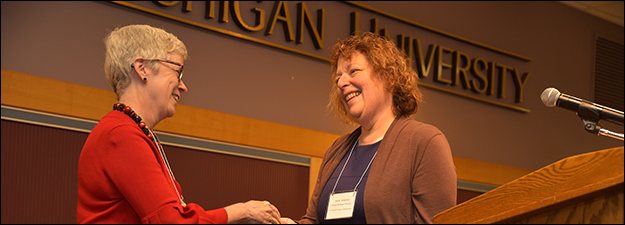Secular Clergy and the Laity III: Episcopal Roles
Sponsoring Organization(s)
Episcopus: Society for the Study of Bishops and Secular Clergy in the Middle Ages
Organizer Name
Michael Burger
Organizer Affiliation
Auburn Univ.-Montgomery
Presider Name
Kalani Craig
Presider Affiliation
Indiana Univ.-Bloomington
Paper Title 1
Friendship, Queenship, and Investiture: The Function of Friendship between Saint Anselm, Queen Matilda, and Countess Matilda of Tuscany
Presenter 1 Name
Hollie Devaney
Presenter 1 Affiliation
Univ. of Hull
Paper Title 2
Conjuratio Concordiam? Intentionality and Sorcery in the Conflict between the Bishop of Mende and the Lord Apcher
Presenter 2 Name
Jan K. Bulman
Presenter 2 Affiliation
Auburn Univ.-Montgomery
Paper Title 3
"In my lands I will be pope, archbishop, bishop, archdeacon, and dean": Secular Princes and Prince-Bishops in Pre-Reformation Germany
Presenter 3 Name
Brian A. Pavlac
Presenter 3 Affiliation
King's College, Pennsylvania
Start Date
12-5-2017 3:30 PM
Session Location
Schneider 1275
Description
Clergy and laity needed each other. Clergy needed lay support—consider, for example, lay founders and donors to churches, and laity at the least, for example, needed the sacraments (except when they disputed that clerical monopoly) or skills such as literacy enjoyed by clergy. Yet these groups were often in conflict: consider, just as a start, conflict over tithes, heresy, control of ecclesiastical appointments, and, in some cases, exercise of lay lordship by ecclesiastics and ecclesiastical corporations (consider, for example, relations between clerical landholders and lay tenants). This large issue of clerical/lay was common to a range of times and place, thus interests researchers over the whole of the Middle Ages, and in both Eastern and Western Christianity.
Secular Clergy and the Laity III: Episcopal Roles
Schneider 1275
Clergy and laity needed each other. Clergy needed lay support—consider, for example, lay founders and donors to churches, and laity at the least, for example, needed the sacraments (except when they disputed that clerical monopoly) or skills such as literacy enjoyed by clergy. Yet these groups were often in conflict: consider, just as a start, conflict over tithes, heresy, control of ecclesiastical appointments, and, in some cases, exercise of lay lordship by ecclesiastics and ecclesiastical corporations (consider, for example, relations between clerical landholders and lay tenants). This large issue of clerical/lay was common to a range of times and place, thus interests researchers over the whole of the Middle Ages, and in both Eastern and Western Christianity.


